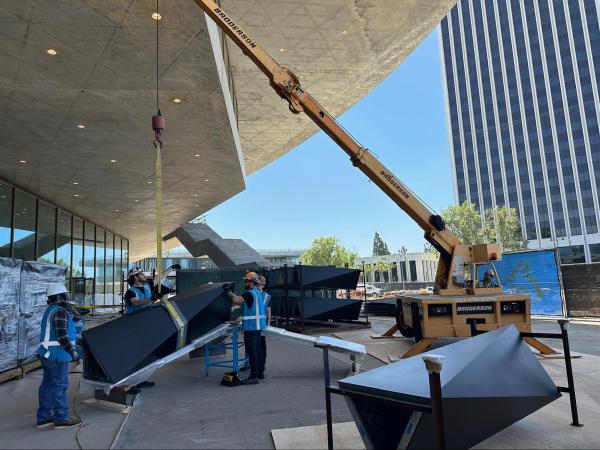As LACMA prepares for the 2026 opening of the David Geffen Galleries, the future home of the permanent collection, a number of outdoor artworks both new and familiar will begin to appear around the building. The first to return is Tony Smith’s Smoke, which is among several beloved sculptures that have become synonymous with the museum during its decades-long history.
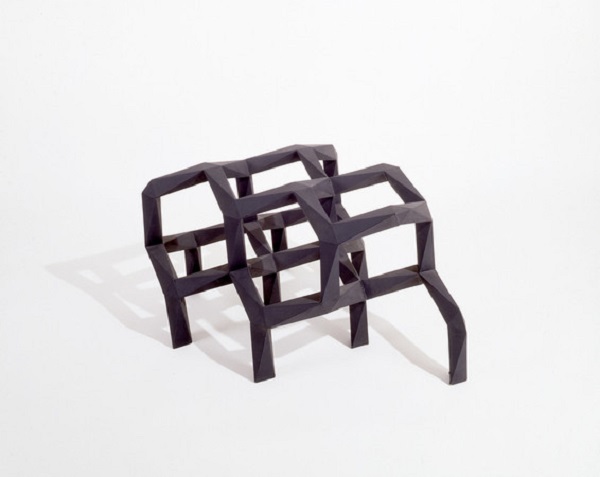
In addition to being one of the largest sculptures ever conceived by Smith, Smoke reflects the artist’s lifelong exploration of patterns found in organic life and is a culmination of his practice combining art and architecture. The work soars 24 feet high and extends 48 feet by 33 feet, but, despite its monumental scale, almost seems to rise and fade like the framework of a cloud when the viewer walks under and around it. Comprising honeycomb-like hexagons supported by a triad of columns with tetrahedral capitals, Smoke is rooted in material geometry, but the dynamic phenomenon of viewing it almost seems to defy logic. In the words of the artist: “My own personal feeling is that all my sculpture is on the edge of dreams.”
Though the sculpture’s voids are just as significant as its mass, installing a decidedly solid form like Smoke, which weighs 14,300 pounds, or just over seven tons, is a colossal challenge. “Before we begin to install a monumental work such as this, considerable coordination and planning are required to ensure everything is ready before we start,” said registrar Linda Leckart. “We had to re-inventory all the parts in storage to ensure that every piece was accounted for. We need to get it right the first time as there is minimal room for errors or delays in the actual installation process.”
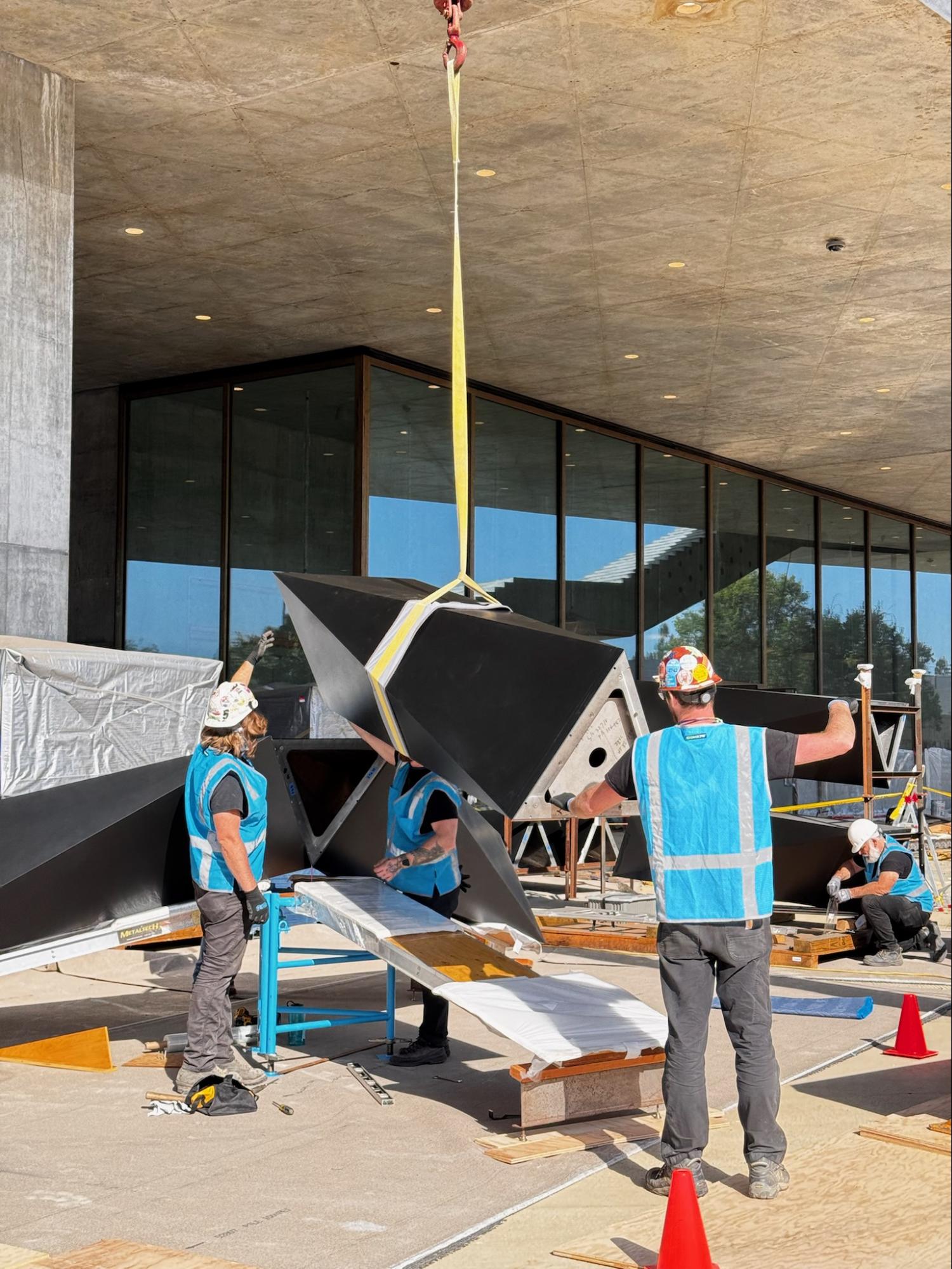
This process, however, was helped in part by the brilliant engineering and seamless fabrication that went into realizing the artist’s vision. The 45 hollow pieces that came together to form Smoke, made of painted aluminum plating attached to an aluminum framework, are identical. They also weigh 300 pounds each. “It took three tractor-trailers to deliver all the parts of the sculpture to the installation site,” continued Leckart. “It demands a lot of physical effort from beginning to end, from loading and unloading the trucks to climbing inside the sculpture to assemble it.”
Since these pieces need to be bolted together from the inside, members of the installation team, after placing each piece in place with a crane, had to squeeze inside of them to do so, taking extra care not to drop any tools inside. The interior of the sculpture is hot and dark, and airflow is limited, so the less time spent inside, the better. Climbing through the sculpture was made a bit easier, however, by the ladders found in some of the work’s vertical elements, which meant installers could travel through it once inside.
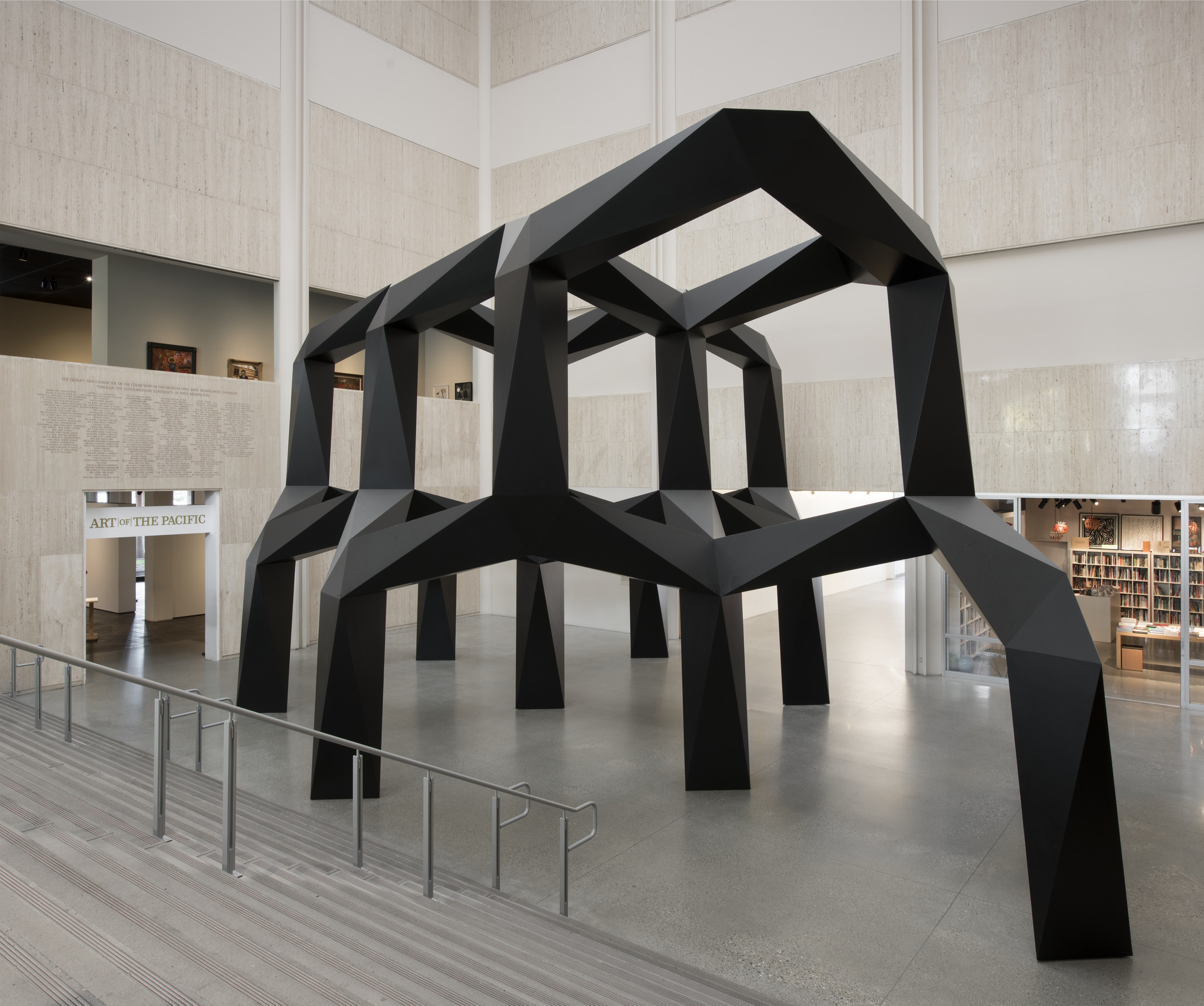
Those who have visited LACMA may remember that Smoke was first installed in the atrium of the museum’s previous Ahmanson Building. (It is the Smith’s largest work originally conceived for an interior space.) Now outdoors, the soaring sculpture has been given more room to breathe, and will continue its life as a touchstone of the museum’s collection that can be seen even by those who aren’t stepping inside. Smoke, which is tucked underneath the concrete form of the Geffen Galleries, now sits only meters from its original site in the Ahmanson Building, a moment of spatial resonance connecting LACMA’s past and future.
When Smoke was deinstalled in 2019 in preparation for the construction of the Geffen Galleries, a note was found left inside the sculpture in 2008 by Adam Swisher, the last technician who had been inside it. "It takes an adventurous spirit to crawl inside a monstrous metal labyrinth," he wrote, going on to express the optimistic sentiment that he hoped “the future is a place of respect for the environment, extinct racism, healthcare for everyone, peace on earth, and love of life.” Though that vision remains a work in progress, LACMA team members carried on the tradition and left another message to our future selves inside the sculpture to accompany the first one.
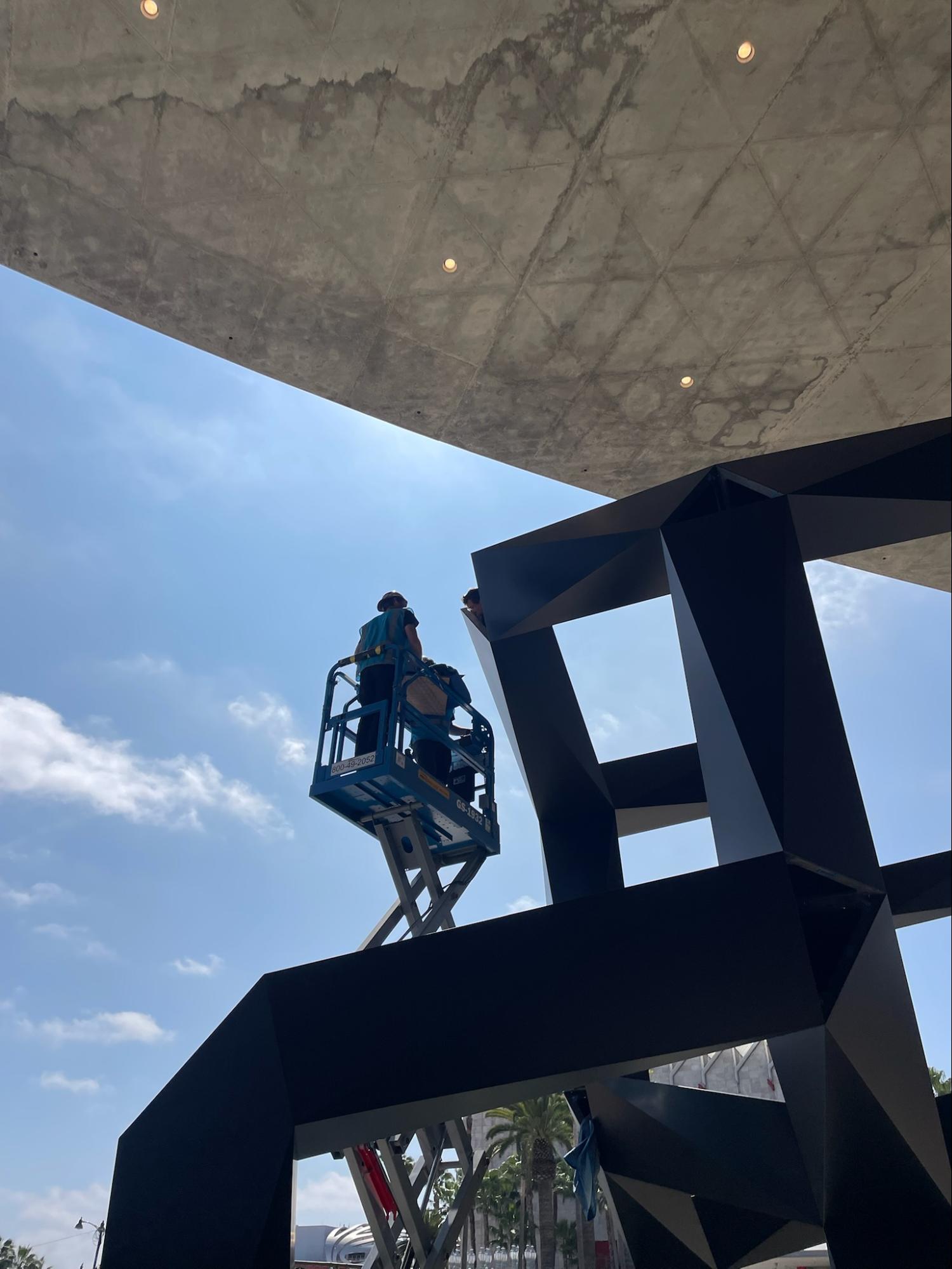
“We hope that our visitors feel welcome here,” the note reads. “We hope that the efforts so many of us have put towards the new building have been received with grace, inspiration, and even love, by the thousands who have been able to pass through here. We hope that the art—from this enormous sculpture to the tiniest object in the galleries—has opened eyes and minds.”
Speaking to Angelenos and museum visitors both in the near future and decades to come, it concludes: “Art has endured for many more years than we, this art work, or this museum has been around, and we are proud to be stewards, for just a brief moment, of LACMA’s incredible collection.” As this collection begins to make its way into its future home, Smith's Smoke seems like a fitting first step.



